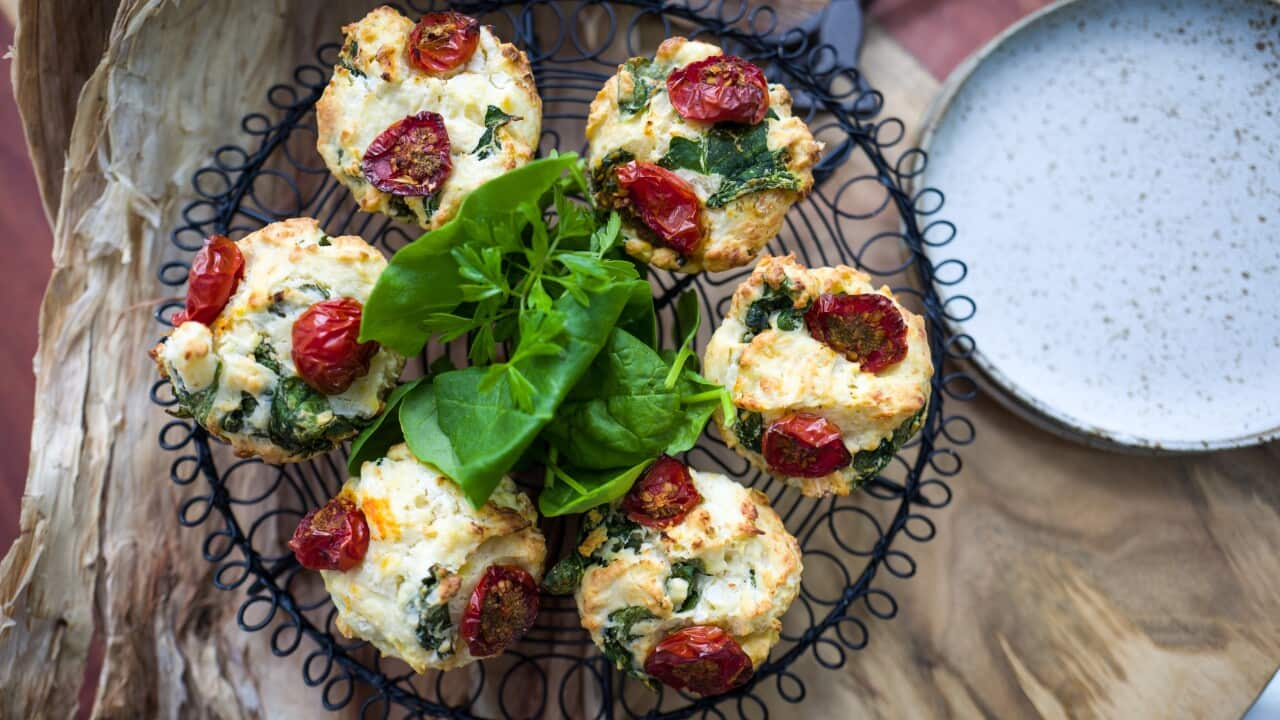Warrigal greens aren’t just a great source of salt-based flavour for your latest dish. For restaurateur and proud Widjabul Wia-bul woman, , the native food is a foundation of family memories, traditional knowledge and Indigenous culture.
“We ate Warrigal greens as young ones,” says Woods, who runs in Byron Bay. “My dad used to take us down on the beach in South Ballina where we'd pick Warrigal greens and eat them as a mob on the beach, together.”
Woods also remembers her grandmother telling her about the intrinsic value that Warrigal greens held as food in her family.
“My nan used to use Warrigal greens to feed mob. She had 11 kids. She used to say that when she was young, she’d often go down to the beach, collect Warrigal greens and cook them alongside seafood (like pippies), sourced from the beach.
“Whether the vegetable was thrown into a stew or cooked on an open campfire with fish, Warrigal greens were used regularly to feed mob.”
Why are Warrigal greens so popular?
Warrigal greens grow naturally in saline soil along Australia’s coastline and have been used in Indigenous cultures for thousands of years. The versatile vegetable, also known as Botany Bay greens, was also one of the first native plants eaten by Captain Cook’s crew to prevent scurvy.
“When it grows at the beach, the ingredient acquires a beautiful, saline, salty quality about it," Woods says. "That means when you use Warrigal greens in a dish, you don’t need to add extra salt to your food, which is incredible.”
Seeds and plants can also be purchased at nurseries. The commercial availability of bush food in recent years has meant that Warrigal greens have increased in popularity.
I think people are having a much more open heart and open mind when it comes to just how rich native foods are within our country.
Woods says she’s encouraged by how non-Indigenous Australia has embraced the native food. “I think people are having a much more open heart and open mind when it comes to just how rich native foods are within our country.
“If there's any blessing that's come out of COVID-19, it's the fact that we've looked a little bit more internally. We've looked around our own environment and started to embrace just how lucky we are to live in this incredible country, which is Australia. We have a more open heart and an open mind to embrace First Nations culture and of course, the foods that come with it."
Are Warrigal greens good for you?
Warrigal greens are also worthy of nutritional attention, given they have been used for medicinal purposes by Indigenous Australians for so long.
“From a dietetic perspective, Warrigal greens are a fabulous source of fibre, iron and vitamin C,” says Accredited Practicing Dietitian and proud Kamilaroi woman, Tracy Hardy of “They are also rich in antioxidants.”
Hardy reminds Australians about the nutritional power of native foods and the connected traditional ecological knowledge that goes with them. This knowledge, she says, reveals a deep understanding of the plant and information on how it should be cooked, as well as possible health cautions for some people.
“Warrigal greens have little fibres on the [plant] that store salt,” says Hardy, spokesperson for
“That means they can be high in sodium, potassium and oxalates. This is something to be mindful of. So if you're someone who has a heart condition or a kidney issue, then you should probably be aware of how much you consume.”
That means they can be high in sodium, potassium and oxalates. This is something to be mindful of.
Hardy explains that the presence of oxalates in Warrigal greens requires the plant to be blanched or steamed before consumption.
“If you don’t blanch [or steam] the vegetable before you eat it, consumption could cause kidney stones.”
She says oxalates can also inhibit iron absorption, so that’s another reason to blanch or steam the greens before tucking into them.
“Know the country that you're sourcing the native ingredient from and understand that there’s a story behind the ingredient from that area. Do that and you’ll also understand the nutritional profile of the plant.”
How to cook and eat Warrigal greens
Once you’ve properly prepared Warrigal greens, they are fine to eat in moderation. So get creative in how you use the ingredient in the kitchen.
“I use Warrigal greens to make pesto,” says Hardy. “I blanch the greens and add them to omelettes, salads and stews. I also toss the leaves with mushroom and garlic and have it on the side with eggs. They are really delicious.”
Woods says Warrigal greens are also a great replacement for English spinach or kale in any dish.
“I feature it on my menu regularly at Karkalla, Byron Bay,” says Woods. “We use Warrigal greens in our native salads or on beautiful steamed, poached fish. There are lots of different uses for it – the versatility of Warrigal greens is one of the things that I love about it.”
Know the country that you're sourcing the native ingredient from and understand that there’s story behind the ingredient from that area. Do that and you’ll also understand the nutritional profile of the plant.
Woods encourages home cooks to experiment with the various uses of Warrigal greens in recipes. After all, she says, if you connect with native foods, you’ll also be connecting with Indigenous culture.
“I think for us, as First Nations people, our history, our culture and our stories are elements that can't be separated from First Nations Food. So if you are going to get out there and [eat native foods like Warrigal greens], make sure you also connect with the stories and the history behind that food as well.
“It will actually make the experience of cooking and enjoying Warrigal greens so much richer.”







